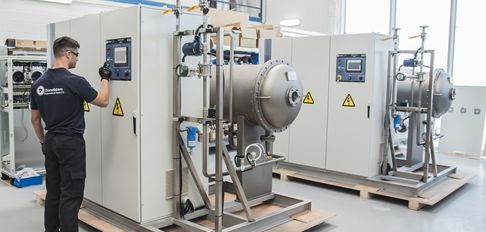Ozone in DWTP
Ozone in Drinking Water Treatment Plant
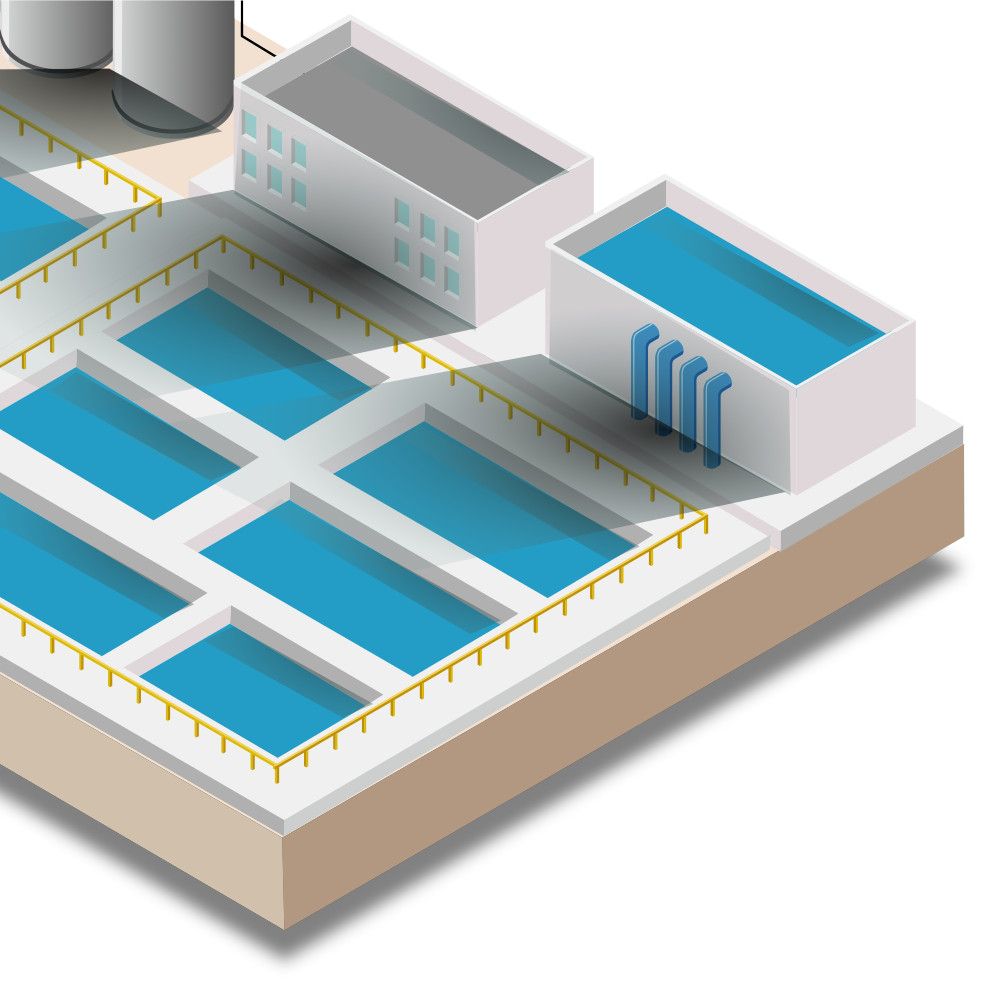
Use of ozone in DWTP
El ozono es un excelente aliado en las estaciones de tratamientos de aguas potables
públicas (ETAP). Al diluirlo en el agua, oxida metales pesados, toxinas, pesticidas,
fitosanitarios, reduce la carga orgánica, la DQO, DBO, turbidez, SS, SD, olor, sabor,
potencia la coagulación y floculación, mejorando la decantación. Aumenta el rendimiento
del filtrado, alarga su vida útil, y reduce en número de lavados.
Es un super desinfectante que no deja residuos, reduce el consumo de cloro, y
evita la aparición de trihalometanos y otros compuestos organoclorados. Además
el ozono se genera in situ, no necesita almacenarlo, transportarlo, ni gestionarlo, el
sistema funciona de manera totalmente automático. Aplicar ozono + carbón activo en su
estación de depuración de aguas potables es garantía de éxito.
Optimize your DWTP by applying Ozone and improve water quality
Ozone allows you to reduce the consumption of chemicals
Ozone is generated on-site, it does not need to store or transport chemicals
Ozone contributes to sustainability and reduction of CO2 emissions
The system is automated, you do not need manpower to apply it
Problems with the quality of the DWTP water?
Problems with the quality of the DWTP water?
In PRE Phase:
Ozone improves the efficiency of coagulation and flocculation in the DWTP, favoring the decantation of the organic load. Oxidizes heavy metals and reduces COD, BOD, turbidity, SS, SD, color, odor, etc.
In INTER Phase:
Ozone improves filtration performance in the DWTP, lengthens the useful life of the filters, and decreases the frequency of washing, reducing rejection.
In POST Phase:
Ozone in a powerful disinfectant used in the DWTP, is very effective in eliminating all types of microorganisms in very short times and without generating chloramines or organochlorine compounds.
1. Oxidizes heavy metals
Ozone oxidizes heavy metals, such as iron, copper, manganese, making them insoluble, favoring their decantation or retention in the filters.
Hence, its use is frequent in a PRE phase, injecting ozone at the head of the DWTP.
2. Enhances flocculation Coagulation
Ozone already has an effect of generating focules and clots, due to the polarization of the water by raising the Redox potential. But it also enhances the effect of other flocculants and coagulants, maximizing the grouping of organic and inorganic material.
3. Improve filtering performance
By having an optimized decantation phase, the filters support less load, which leads to fewer washes and longer useful life. Finally, ozonation generates molecules with a better average molecular weight, which favors absorption in activated carbon filters.
4. Powerful disinfection
Ozone eliminates at low concentrations and contact times, all kinds of microorganisms, such as viruses, bacteria, fungi and molds. It also has a low residual effect,
5. Improves the smell and taste
Chlorination in the presence of organic matter generates organochlorine products that, in addition to being harmful, provide an unpleasant taste and odor for the consumer. The most effective method is the combination of ozonation + filtration on activated carbon (O3+GAC).
6. Reduces use of chlorine, chloramines
Better purified water with less organic load will have a lower demand for oxidants, in order to maintain optimal disinfection levels. Therefore if you use ozone in your DWTP, you will consume less chlorine.
What type of ozone generator do I need?
Below, we show you the ranges of ozone generators available to treat DWTP
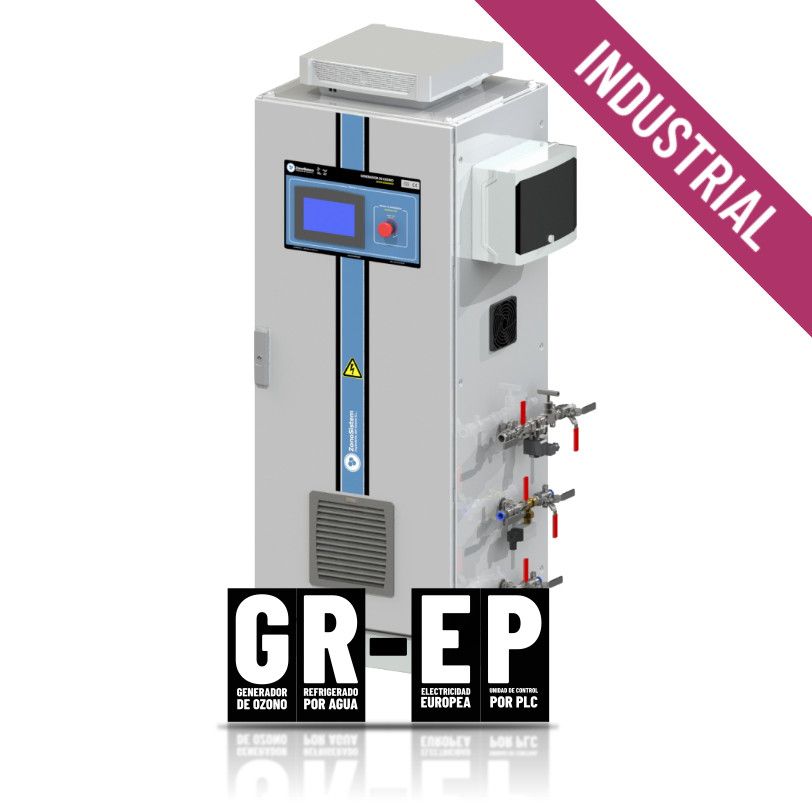 | 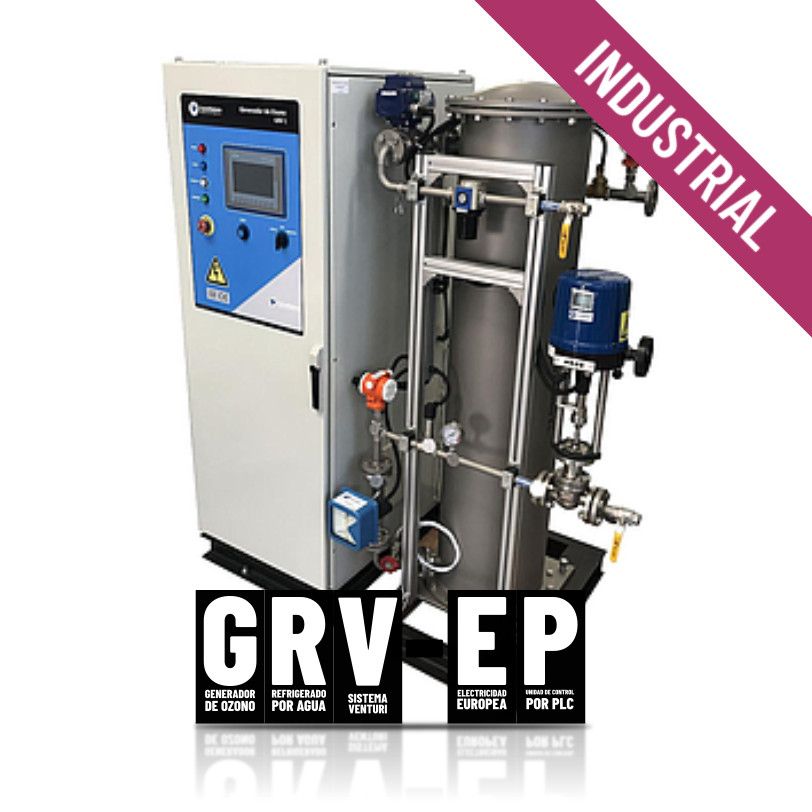 | 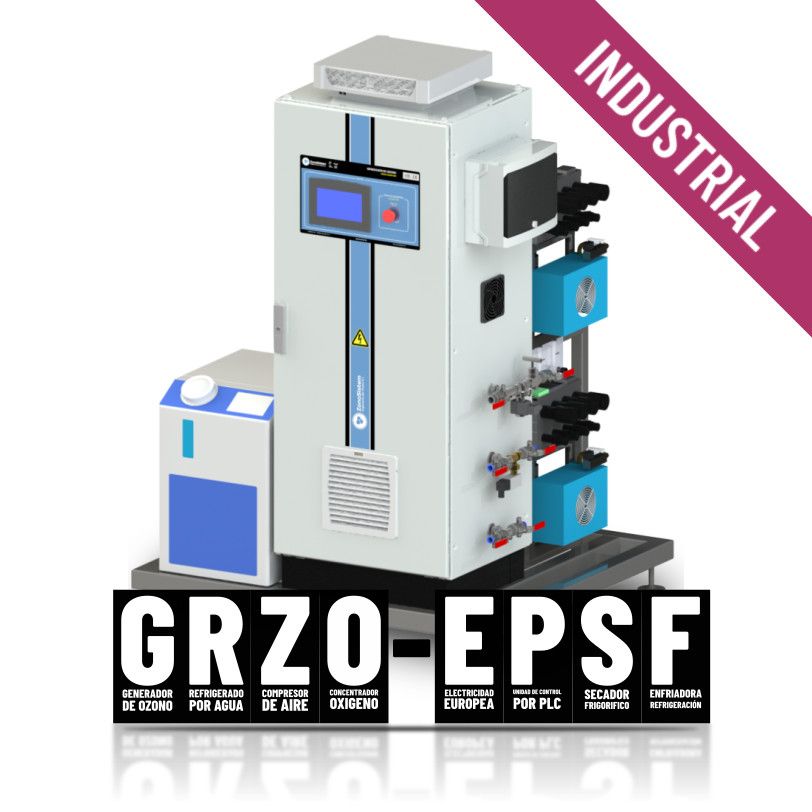 | |
|---|---|---|---|
| Recommendations | Ozone equipment from 100 to 1,000 gO3/h For LOX feeding, liquid oxygen. | Ozone equipment from 1 to 40 kgO3/h For LOX feeding, liquid oxygen. | Ozone equipment from 100 to 1,000 gO3/h With integrated oxygen concentrator. |
| Equipment Included | Generation module. Ceramic dielectric. Water Cooled Generator Transformer and electrical panel. With Automatic Power Control. With recipe manager by PLC. With Leak Sensor. | Generation module. Borosilicate Dielectric. Water Cooled Generator. Transformer and electrical panel. With Automatic Power Control. With recipe manager by PLC. With Leak Sensor. | Generation module. Ceramic dielectric. Water Cooled Generator. Transformer and electrical panel. With Automatic Power Control. With recipe manager by PLC. With Leak Sensor. With compressor. With Oxygen Concentrator. With integrated cooling system. |
| Optional equipment | Ozone gas meter. Ozone proportional valve. Refrigeration system. Dosing system. Ozone destruction system. Sub valves over. | Ozone gas meter. Ozone proportional valve. Refrigeration system. Dosing system. Ozone destruction system. Sub valves over. | Ozone gas meter. Dosing system. Ozone destruction system. Sub valves over. |
| Ozone concentration | 150 gO3/m3 | 150 gO3/m3 | 150 gO3/m3 |
| Ozone Productions | From 100 to 1.000 gO3/h | From 1 to 40 kgO3/h | From 100 to 1.000 gO3/h |
| Working conditions | From 1 to 3 bars Hard work | From 0.6 to 1.4 bar Hard work | From 1 to 3 bar Hard work |
1. What is the difference between the ranges?
The GR-EP and GRV-EP range of ozone generators are equipment to be fed with LOX oxygen. They are industrial, robust equipment, with a high concentration of ozone, conscientiously designed and manufactured to work 24/7. The GR-EP range covers up to 1kgO3/h, with ceramic dielectric technology, while the GRV-EP range is for larger productions of up to 40kgO3/h.
On the other hand, the GRZO-EPSF range differs from the other two, in that it has a built-in compressor and oxygen concentrator, so it does not need to be fed with LOX oxygen, it is autonomous equipment, it only needs electricity. It is also an industrial equipment with high performance and performance.
2. What range do you recommend?
The first thing is to calculate the amount of ozone you need. If you need more than 1Kg or 3/h, you will have to select the GRV range. For productions less than 1KgO3/h, you have the GRZO-EPSF version, with compressor and oxygen concentrator, and if you prefer to work with LOX oxygen supply, you have the GR-EP range. I recommend using the GRZO-EPSF range whenever possible, it is a bit more expensive but you avoid the costs of LOX oxygen.
3. How much ozone do I need?
Generally, doses between 2 and 3 ppm of ozone are applied to the total flow of the plant.
Examples of Ozone in DWTP
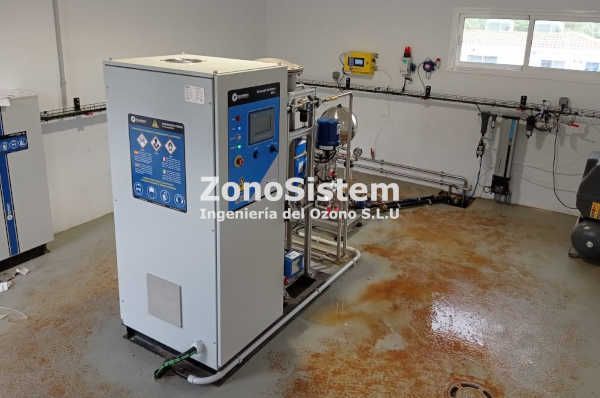
Ozone for DWTP in Hornachos. Extremadura, Spain.
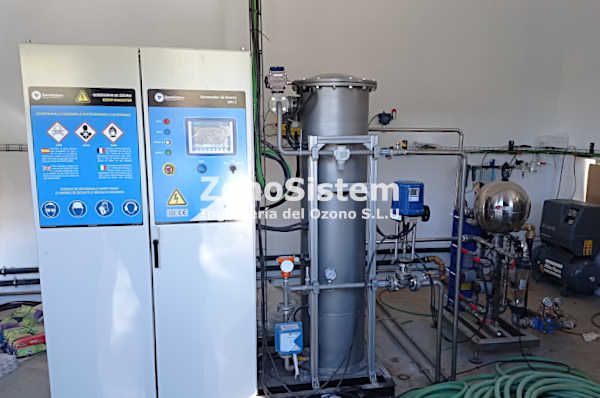
Ozone for DWTP in Zafra. Extremadura, Spain.
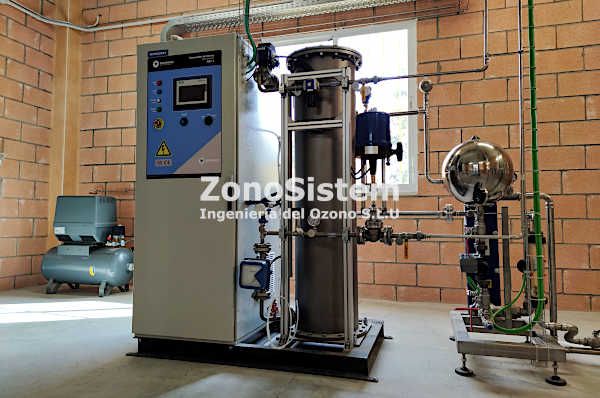
Ozone for DWTP in Jerez de los Caballeros. Extremadura, Spain.
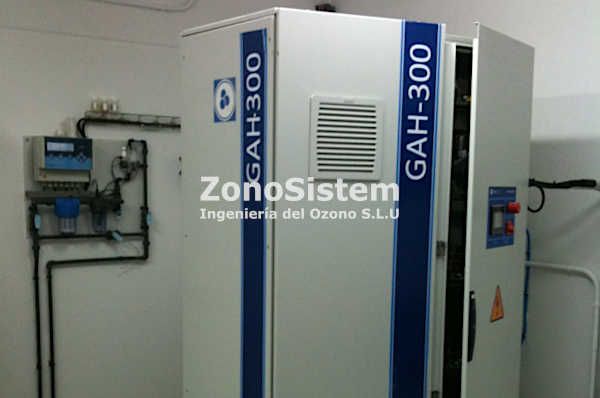
Ozone for DWTP in Aguilar de Campó. Palencia, Castilla la Mancha. Spain
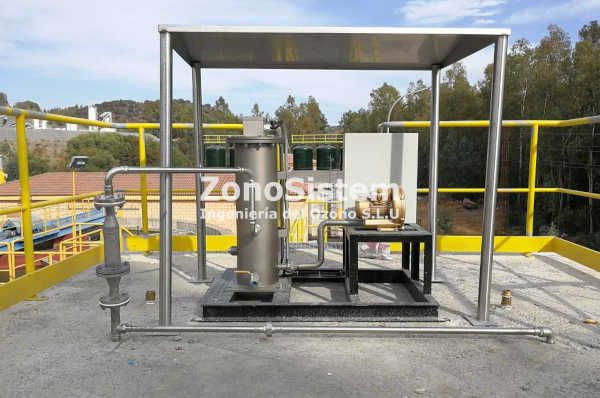
Ozone for DWTP. Extremadura, Spain.
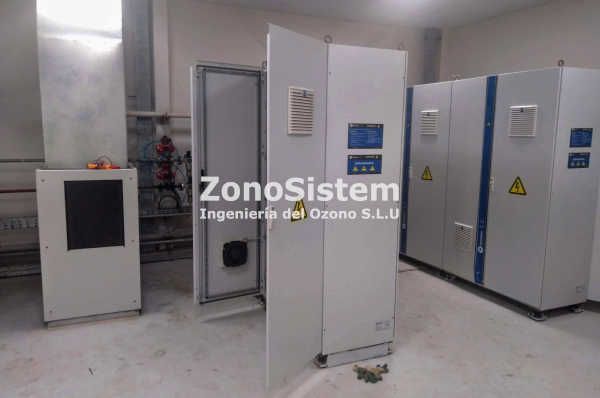
Ozone in DWTP. Saudi Arabia


